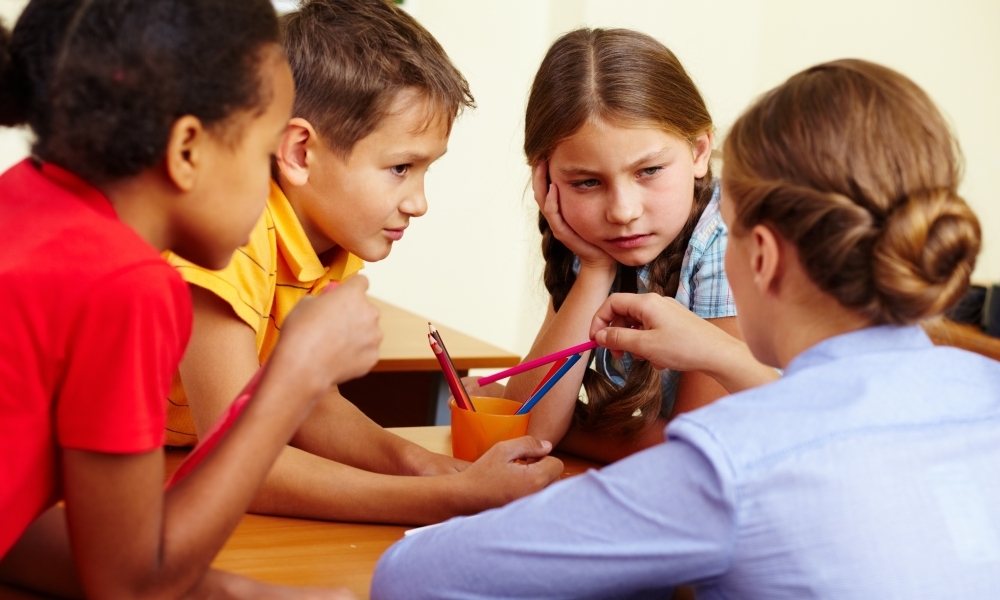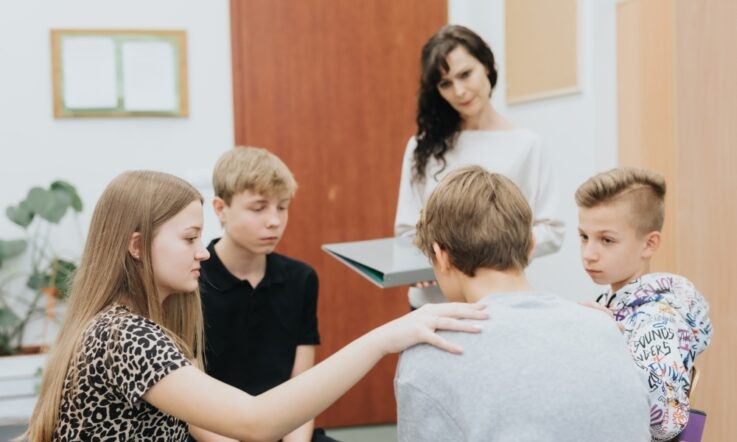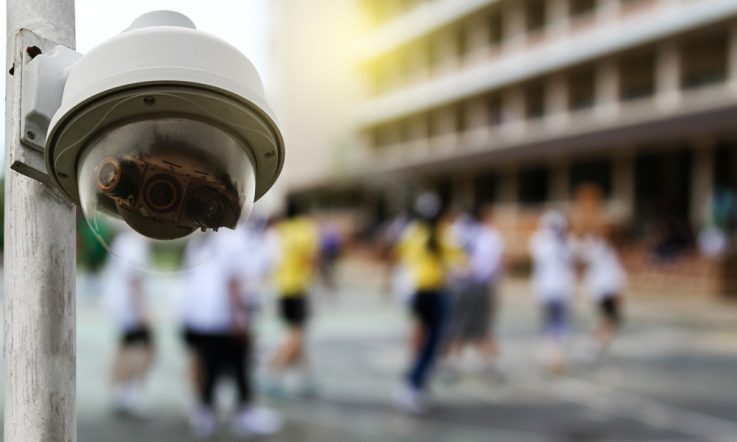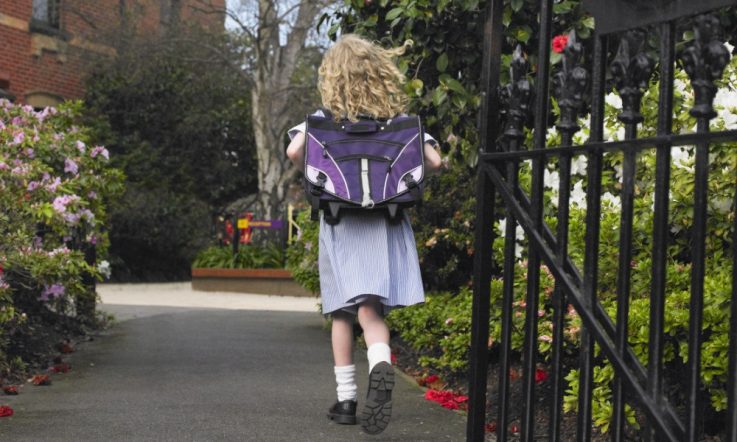‘… Restorative Justice really does take a bit of a long-term view … it is about how we are preparing the students and ourselves to live well with one another.’ Dr Kristin Reimer is a Senior Lecturer in the School of Education, Culture and Society at Monash University, focusing on educational access, inclusive education and Restorative Justice. She is also the creator and developer of Restorative Schools Australia – a website for those who are curious about using Restorative Practice in Australian Schools.
In part one of her Q&A with Teacher, Dr Kristin Reimer talked about how Restorative Justice can be understood within a school context. In the second instalment, she shares what it means to build a restorative school culture and what a Restorative Justice Framework in schools looks like in practice.
What does it mean to build a restorative school culture?
Obviously you can't just bring in one step then your school becomes restorative. Rather than starting with dealing with discipline issues or conflict, it has to start with the centring of relationships. So I would say focus more on the building and maintaining part, and the repairing part will come later on. And it can look very different for different schools, because there’s not just one way to build relationships.
And so I would say take a look at what's going really well in your school that has to do with relationships – because schools are doing that all the time. But then also take an honest look at: When do we veer off from centring relationships? When do we start to focus more on the rules or on outcomes? We get pushed by what the demands are in schools. So it requires just having that honest assessment.
The other way to build a restorative school culture is to really align our approaches to discipline with our approaches to pedagogy. And so even within whatever we're teaching, to make conflicts normal, to talk about different perspectives, to have multiple answers to different questions and to sort of keep on making those connections between how we're learning about content and how we're learning about how to be with one another.
I teach mostly in circle. And circle is a particular practice of Restorative Justice. You can use circles with pedagogy, for example you can talk about the introduction to a new unit on Chemistry and going around the circle and asking, ‘so what do people know about this?’ And listening to one another and sharing all of those practices helps to build the restorative culture.
The other part I would say is that we often tend to focus on the students, and thinking that it’s just the students who need to learn these things – they need to learn how to deal with their conflicts and respect one another. And it is as important, if not more important, to focus on the adults in the school and to think about how we relate with one another.
How do we deal with our own conflicts when they come up? How do we handle staff meetings? How do we deal with professional feedback? So if you start with the adults, it tends to trickle down more and more into the rest of the school culture.
Margaret Thorsborne and her colleagues have done a lot of work on the readiness of schools to bring in Restorative Practice, and ensuring that schools are setting the groundwork for that. So that would also be a place to look for schools who are interested in bringing in Restorative Practice and Restorative Justice.
Why does Restorative Justice need to be used proactively and what might this look like for teachers day-to-day?
I'll go back to circles to start with, because it's a very simple practice in some ways, but it can also be quite profound. So people use them differently from place to place, but some teachers will start each day with a circle. And it is about physically being in circle, because we can actually look at one another, the teacher can gauge how students might be feeling in their body from day-to-day – it gives you a good sense that way. But it also has us actually providing attention to each person, even for 15 seconds, just to look at each person and to pass the space around to each person.
Using circles at the beginning of the day will often just be as a check-in. So there might be a question that a teacher poses, or perhaps they have students posing different questions, or it might be about the weekend. But it's a chance to have that moment of check-in.
Other ways to use circles would be, as I mentioned before, about the content. So you might be introducing the unit or asking what people’s questions about something are, or maybe you're getting ready for a test and you're talking about the challenges and what people are finding particularly challenging.
The traditional way of posing a question and having someone raise their hand is a very different experience than actually posing that in circle, because when someone raises their hand, they actually have to ask for the space. And, of course, we know that some students are much more comfortable with that and others will never raise their hand.
In circle, the space is provided to you. So you can pass – that's part of a lot of restorative practices, that they're voluntary, you're not forced to do anything – but you're much more likely when the space is actually just given to you to say something.
And so, in circle, a lot of teachers talk about how they hear from students that they don't hear from otherwise. And so it's the students that may not be getting noticed though their behaviour that might be the ones that are very quiet and go under the under the radar. But in circle, they actually become visible and they become seen and heard. So I do think that circles are very, very powerful. But there's other ways to do that, too.
I think the main thing for teachers to do is to think about how they open up the space in whatever their own practice is. How do they open the space to practice storytelling, curiosity about different perspectives and listening to one another? And also to practice just making those connections explicit between students, between self, experience and content. All of those connections build our understanding of each person, but also build our relationships.
What does Restorative Justice look like in practice in a classroom setting?
So the traditional first question is ‘what happened?’ And there is something in that. I mean, none of these questions are magical, but they do something that opens up that space for storytelling. So ‘what happened?’ can really move you away from defensiveness and finding blame and to bring it into the curiosity space.
I would say that in any sort of conflict, start with that or a similar question. And a restorative conversation can be a 2-minute conversation. There might be a student in your class who hasn't done their homework. You might ask ‘what happened?’ and you might have a few questions from there. It doesn't have to be a lengthy, drawn out, multi-party sort of thing.
It can be, of course, depending on the depth of the issue or the severity of the issue. And a lot of teachers will have cards that have the restorative questions written on them, and that can be helpful. But you also don't have to stick to those questions exactly.
There's really helpful work done by Mark Finnis from the UK, who's talked about 3 phases of restorative conversations, and the first is storytelling. So that involves questions such as ‘What happened?’, ‘What were you doing at the time?’, ‘What were you thinking?’, ‘What were you feeling?’ Just getting sort of kind of that narrative or some understanding of what happened through storytelling.
And the second one is impact. ‘Who's been affected?’, ‘How have they been affected?’, ‘How has this affected the larger class?’, ‘How is it impacting what you're doing right now?’ So, focusing on the impact of whatever has happened.
And the last part is the future focus. ‘So, what can we do now?’, ‘What do we need to do to make this better for [whoever's been involved]?’, ‘What do we need to do to make sure it doesn't happen again in the future?’, and ‘What do you think you might do differently next time?’
And I think that's really helpful, just to have in mind for teachers – storytelling, and then talk about the impact, and then focus on the future. And those questions are going to look different depending on whatever the situation is or the issue is, but I think those 3 phrases are helpful.
Are there any key differences to consider for teachers practicing Restorative Justice in early years/primary/secondary education?
There definitely would be – it would differ from what it looks like from one age to the next. But the principles remain the same, so it's always about relationships. It's always that each person is inherently worthy, and to be curious about what's going on.
But there would be a difference in language. A lot of time with younger students, people use visuals to talk about how you're feeling or what the impact has been. So Jane Langley here in Victoria has worked on using Restorative Justice in the early years, and so she's got a number of books and resources that deal with that.
And I would say, too, that as students get older, you can put the responsibility onto them more and more. Because it is an internally motivated thing, the idea is that you support students to build the skills and the practices, even with younger students. But as you go on, it should be student initiated – that the students are able to deal with their own conflicts and have those conversations. Or that they might ask for a circle to deal with an issue, or lead a circle with questions.
And you can do that with younger ages, but I would say even more so in the older years as they’re becoming adults and thinking about being within other communities. They are an integral part of their learning communities at any age in schools, so the more that we can actually invite students to take the leadership roles in this the better.
Can this approach be used in conjunction with other conflict management strategies?
Definitely. I mean, there are strengths to learn from all sorts of different approaches, and it would align with a lot of approaches. I would say the one consideration for whatever approach that you're using is to ask whether the focus is on the internal motivation or on external motivation, like the rewards and the punishment.
Because if you're trying to use them together, it can get quite confusing and you sort of undermine some of the messages that you're sending with Restorative Justice. And so, if you start with the central principles and the central values, the practices themselves can look quite different.
Is there anything else you’d like to add?
I think it's important to see that Restorative Justice really does take a bit of a long-term view so it's not about just ‘what can we do here and now with this issue in the school?’ But it is about how we are preparing the students and ourselves to live well with one another.
And there's work that I do with [Emeritus Professor] Stephen Kemiss and his colleagues, where he talks about education having 2 purposes. The first is to help people to live well, and the second is to create a world worth living in for all.
And I think that Restorative Justice really aligns with those purposes of education. And so I think there's a there's a depth there, but there's also a long-term view of where we're going.
Further reading:
To read more about how you can use Restorative Practice in your school setting and to read more about Kristin’s work, visit https://restorativeschoolsaustralia.org/.
In this Q&A, Dr Kristin Reimer talks about the types of questions educators can ask through a Restorative Justice Framework, focusing on internal rather than external motivations. As a teacher, consider how you can start to shift the way you respond to conflict in your classroom or in the yard to encourage storytelling from students, focusing on impact and how students can move forward from conflict.



